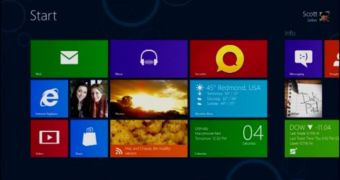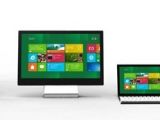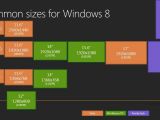Windows 8, Microsoft’s next-generation platform, will arrive later this year with support for a much wider range of devices than its predecessors, including touch-enabled tablet PCs. To ensure that it will deliver the expected experience on all these, Microsoft packed it with support for more screen sizes than before, and also with the ability to adapt to more screen resolutions.
However, one thing that should not be forgotten here is that applications built specifically for Windows 8’s new Metro UI will also need to be able to scale on these diverse screen sizes and pixel densities.
Application built for Windows 8 will have to feature support for screen resolutions higher than 1024 x 768 pixels. No upper limit has been set until now.
In a recent post on the Building Windows 8 blog, David Washington, a senior program manager on Microsoft’s User Experience team, offers a series of details on the various screens on which Metro UI apps will be featured.
Thus, we can expect them on tablets packing screens of at least 10-inches, as well as on notebook PCs with screens in the 12 to 15-inch area, and on devices that pack screens above 23 inches diagonally.
To build applications that would be able to offer a great experience to all users, developers will have to consider the following device classification, based on displays:
Screen size: There will be PCs with different screen sizes, from the smaller screens on tablets, to medium sized laptops, and large desktops and all-in-ones. These screens will also come in different shapes or aspect ratios.
Screen resolution: Screens will have an increasing number of pixels on screen, or screen resolution. In general, the larger the screen, the higher the screen resolution, but this isn’t always the case.
Pixel density: Screens will also have different pixel densities, which is the number of pixels within a physical area, or dots per inch (DPI.) The pixel density increases as the screen resolution increases, but the screen size remains constant.
Of course, developers should also keep in mind that there is a series of variables that appear when talking about screen dimensions, including the fact that a screen can run at different resolutions, and that it might have more than one aspect ratio.
You can learn more on the various common wide-screen aspect ratios and screen sizes that are supported on Windows 8 courtesy of the graphic attached to the left.
“Windows will support just about any screen dimension so long as the graphics driver and hardware combination provide the correct information to Windows. In addition, some screens will scale to different aspect ratios via cropping and/or stretching,” David Washington explains.

 14 DAY TRIAL //
14 DAY TRIAL // 

